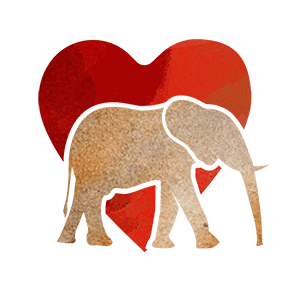A herd remained in the area close to the Mapea gap, where the elephant herds traverse through a natural depression in the Yatta, accessing the southern and northern areas of what is now known as the Tsavo East National Park. The Galana River flows through Tsavo East at the base of the Yatta Plateau and eventually onto the Indian Ocean. David Sheldrick, as the founding warden of Tsavo, first built the road across the Galana River, the Lugards Falls causeway and over the Yatta following the contours of well traversed elephant paths and this has formed the access between the southern and northern areas of the park ever since. It was on a similar path that this spent, ravaged and completely parched baby elephant lay. The Rangers were not actually sure he was still alive, and certainly didn’t fancy his chances of lasting until ground teams from Voi reached him. Thankfully they were swift to report his plight over the radio alerting our Voi elephant Keepers and the DSWT team accompanied by additional KWS Rangers rushed to the site. Due to the drought our teams have become well versed in the life saving protocols required to retrieve desperate drought-stricken victims who simply can no longer continue, so they carried with them all the necessary supplies and equipment required. At the same time the DSWT helicopter pilot Andy Payne was informed too so he prepared everything from his end, based out of our Kaluku Field headquarters. With ground teams and air rescue well coordinated unnecessary delays were avoided as with this case it was clear every minute was going to count.
By the time the team arrived on site, a one hour drive from Voi, HQ for the southern section of Tsavo East, the situation looked bleak. Despite the elephant herd lingering on the banks of the river we were forced to move the recumbent calf into the Landcruiser and make a hasty retreat to Lugards airfield on the south bank of the Galana River, just a short 5km drive away. Once there they lifted the baby out of the Landcruiser and lay him in the shade of an acacia tortilis tree, and immediately set about trying to revive him, placing an IV drip into the calf’s by now sunken veins so low was his blood pressure. To everyone’s relief after a while he stirred and they dared hope that just maybe they were in time to save his precious life. As they stabilized him, ensuring he received a healthy amount of fluids into his system, his eyes opened and he became increasingly responsive.
He was now prepared for transport, all during the most brutal time of day at 3.00pm with temperatures soaring, reaching some 38 degrees in the shade. By now Andy in the DSWT helicopter had arrived at the strip, and having removed the back seats already was prepared so the calf was carefully lifted and maneuvered into the aircraft and made comfortable with his legs safely strapped, all the while the IV fluids were still dripping into him. Without delay he was up and away and headed for our Nairobi Nursery as he was going to need serious intensive care for weeks and months to come back from the brink. Fittingly we named this young calf, estimated to be approximately a year old, Mapia, after the location where he was miraculously found in time.
On arrival at the Nursery he was transported into a stockade at first, but with impending clouds threatening rain Angela made the decision to transfer him into a stable as he was going to require days of intensive managing his fluid levels and general weakness and the risk of rain could spell disaster in one so weak.
Ambo was in the next door stable so throughout the night he was able to provide the reassurance and comfort the newcomer needed.
As the days passed he hovered close to death, collapsing regularly and requiring hasty response to counter each and every situation. But in time he began to feed well on not just his milk but also the freshly cut greens placed in his stable day and night, and we were witness to the revival of this lovely little elephant. He still looked worse for wear with curled ears and crinkled cracked skin, all remnants of his ordeal, but as the weeks passed he grew stronger, and was ready to join the others out in the forest.
Since then we have been able to marvel in his transformation, and watch this little calf blossom into the elephant he once was. Very tragically his fate robbed him of his family, but he will eventually grow wild in Tsavo and in the fullness of time, who knows, he may well meet his family again. Tsavo has a population of some 12,500 elephants. It must be remembered that without the intensive care he received spanning many months he would not be with us today – so he was very fortunate to be spared and one of the lucky ones as the drought took its toll in 2017 with over 350 elephant dying in Tsavo alone.





































